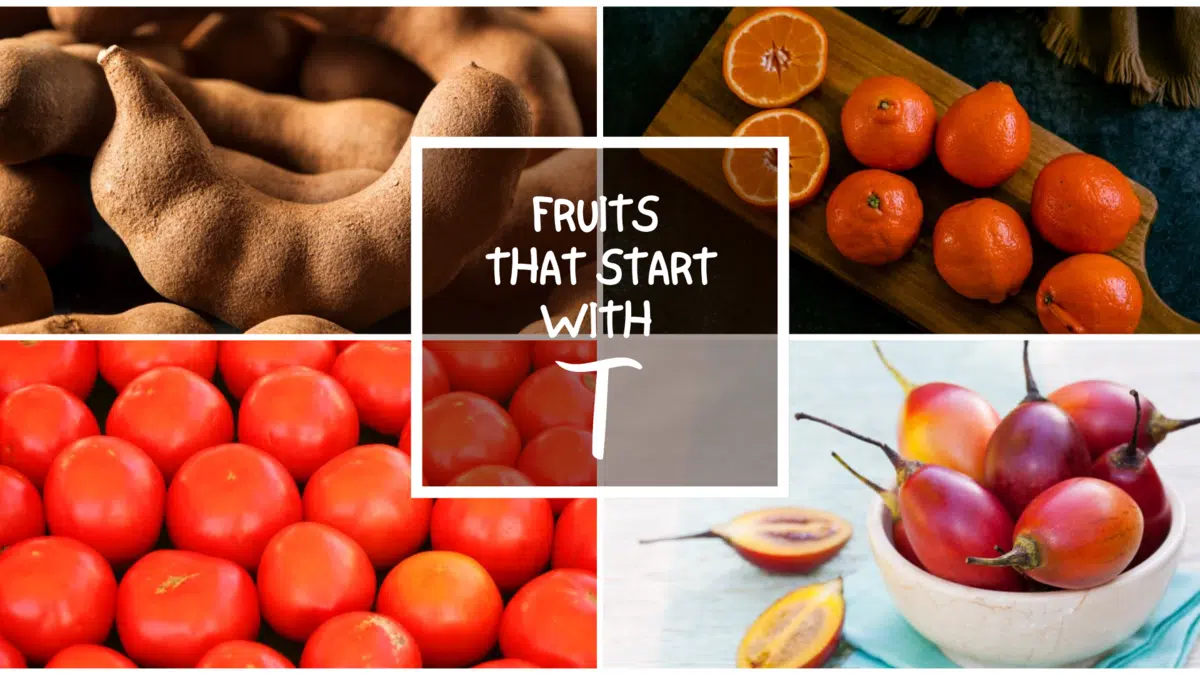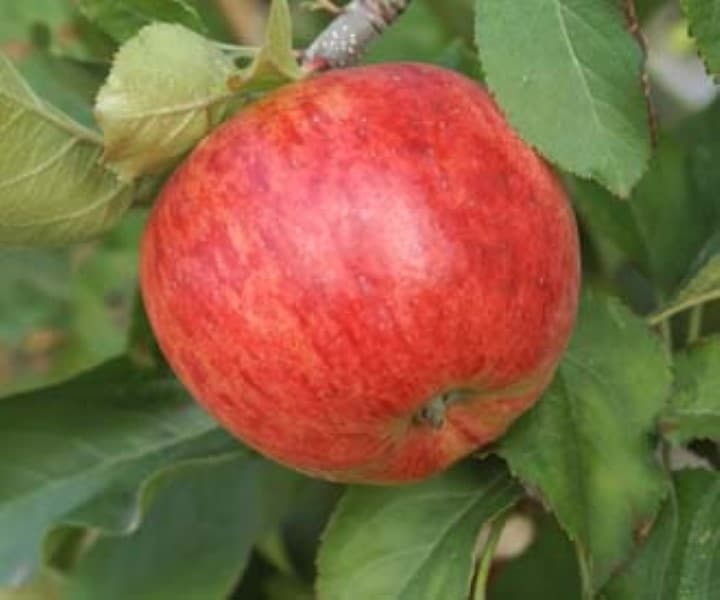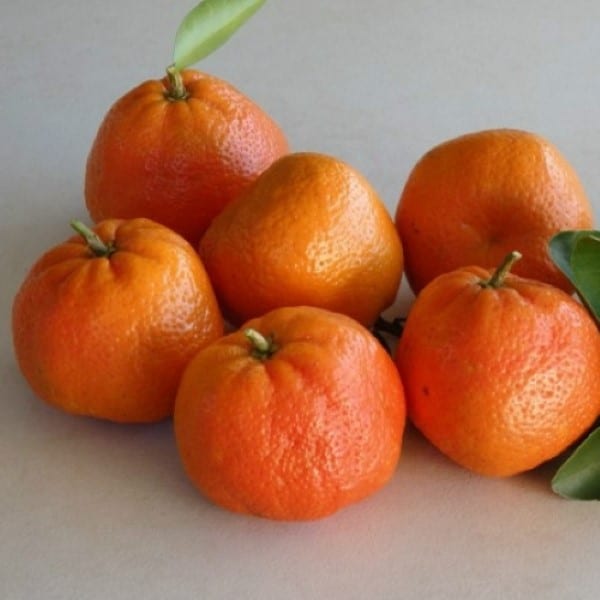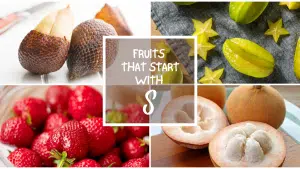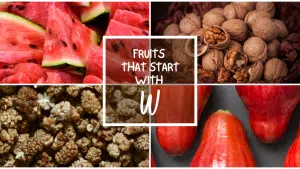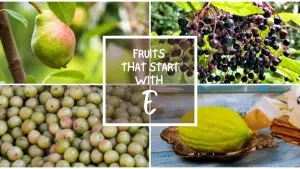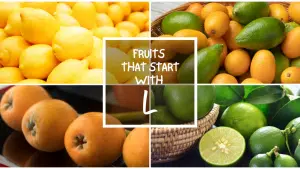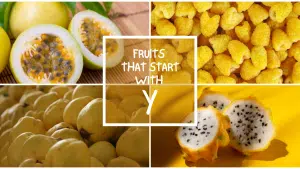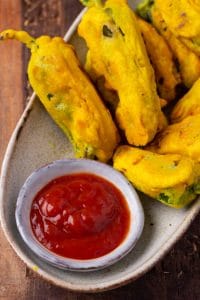All The Fruits That Start With T
Important Note: When you buy through our links, we may earn a commission. As an Amazon Associate we earn from qualifying purchases. Content, pricing, offers and availability are subject to change at any time - more info.
Fruits are essential to maintaining a healthy body. They vary in size, shape, taste, and nutritional value. However, there are so many fruits present in the world of great and rich nutritional value which you probably have not heard of or tasted. This article contains a list of fruits that start with T.
Presented to you is an opportunity to add to your knowledge about the different available in the market and their nutritional benefit. Here is a list to remember the next time you are asked to mention all fruits, starting with a T.
- Tamarind
- Tangelo
- Terap
- Tamarillo
- Tangerine
- Tart Cherry
- Thimbleberry
- Topaz Apple
- Tangor
- Tayberry
- Tomato Fruit
- Topinambur
- Trinidad Moruga Scorpion Pepper
- Tomaccio Tomato
- Turban Squash
- Tabasco Pepper
- The Final Letter
Tamarind
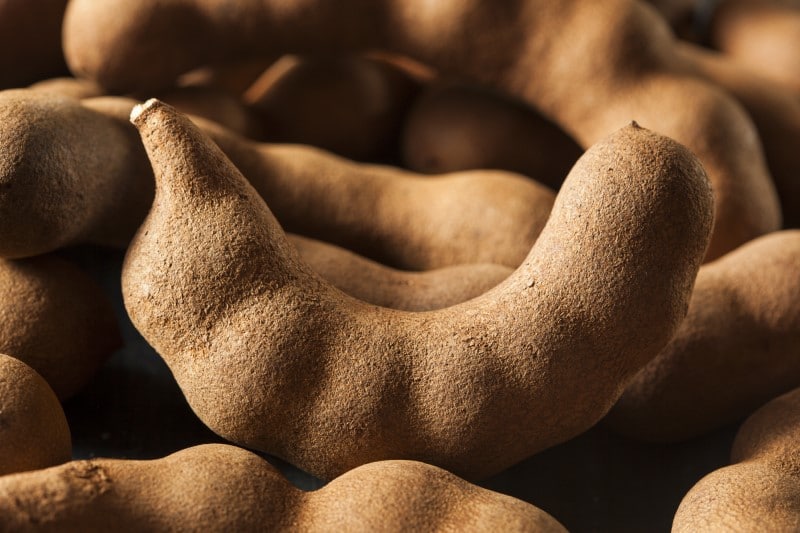
Tamarind tree has a scientific name Tamarindus indica. The tamarind is a tropical fruit tree belonging to the Tamarindus genus. Tamarind fruit is native to the region of Africa. Presently it is grown in southeast Assia, western Asia, and Australia.
The tamarind fruit is brown when ripe and green when unripe. The fruit is enclosed in hard pods that resemble a bean and can measure a length of 12 to 15cm long. Inside these pods is an acidic pulp that is fibrous with seeds at the center. When ripe, the pulp of the tamarind is fleshy, juicy, and a bit sour.
The Tamarind fruit is diverse in uses. You can decide to eat the fruit raw and enjoy the sweet-sour pulp. The pulp of the fruit is used to spice up different meals. You can cook and serve it as a sauce with meals like fried potatoes. You can also boil the pulps to make a naturally refreshing drink. Alternatively, tamarind leaves are also edible in some regions of the world.
Tamarind is rich in tartaric acid, an antioxidant that helps boost your immune and improve your absorption rate in the intestines. Tamarind promotes healthy cells and prevents infections in the body because of the vitamin B contained in them. Tamarind also contains calcium, an essential mineral to help you strengthen bones and muscles and improve the functions of your heart and nerves.
Tangelo

Tangelos’ scientific name is Citrus × tangelo. The name suggests that the fruit is a crossbreed between the tangerines and the grapefruit-like pomelo. Tangelo belongs to the citrus fruits family, and it mainly grows in regions that experience warm climates. However, the fruit is also grown in Turkey, USA, Florida, and Israel.
Tangelo fruits are slightly deformed in shape, unlike oranges. They take the shape of a bell and possess a bright reddish-orange color. The skin of the tangelo fruit is thin, rough in texture, and easy to peel. Inside is a colored pulp that is juicy, a little acidic but with a flavor of an orange. Depending on the variety, the fruit lack or can contain cream seeds.
Tangelos are superior in taste compared to oranges. The fruit shares the sweetness of tangerines and the soreness of the grapefruit, giving them a unique flavor. However, you need not worry about the acid because its acidic levels are low.
Tangelo fruit is often easy to peel, and you can eat it in its natural state. The juicy, saturated pulp of the tangelo fruit makes it an excellent recipe for making juices. However, you can choose to slice it up, combine it with other fruits, and serve it as salads. The tangelo can also be smashed into a paste and then added to drinks for flavor and as a sweetener.
Tangelo contains flavonoids, a component that helps you detoxify your body and reduce inflammation. These juicy citrus fruits contain folic acid, which helps you produce new cells in your body. The folic acid also inhibits the body from changing DNA and thus prevents cancer cells from growing. Vitamin C in tangelo strengthens your immunity and prevents cardiovascular diseases like heart attacks.
Tangelos are always available in winter and summer around groceries stores all around. When choosing tangelo fruits, always go for those heavier than their size and which have a softer feel.
Terap
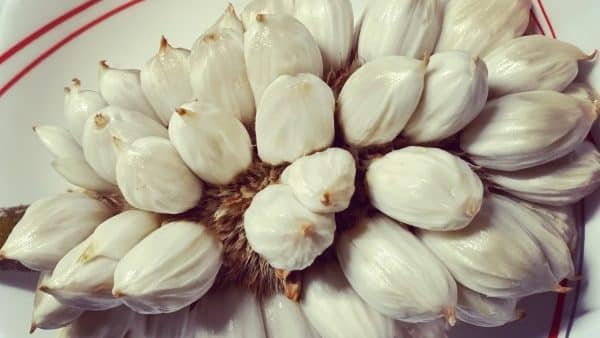
The scientific name of the Terap tree is Artocarpus odoratissimus. The terap fruit is closely related to the jackfruit but with a distinctive round to oval shape. The fruit has a fairly thick skin that turns brown when the fruit is ripe. The skin of the fruit is also covered with blunt, soft spikes.
The terap fruit was initially grown in the tropical forests of West Asia and Southeast Asia. However, the fruit is now widely spread across the world. It is also commonly found growing in tropical countries like Brazil, Congo and Madagascar and the united states.
This terap fruit is well known for its robust and intense scent, similar to ripe jackfruit. The scent becomes more robust and widespread when the fruit is ripe and ready. The scent should, however, not make you shy away from enjoying the tasty, creamy pulp inside that is juicier and with a savory flavor.
The fruit is soft and sweet like a custard with a slightly sour taste when ripe. The flesh is so soft that you can easily separate it from the seeds with your teeth. However, you can choose to eat both the seeds and fruit. Most people prefer eating the fruit flesh alone, but you can also opt to dry the seeds and roast them to get the test of nuts.
The terap fruit is rich in carbohydrates, making it suitable to give your body the right amount of energy. Terap also contains vitamin A that improves your vision, reduces acne, supports bone health and reduces your risk of certain types of cancers.
This fruit is also a rich source of proteins, which help reduce muscle loss and speed recovery after exercise. This is why it is known as an athlete fruit.
Tamarillo

The scientific name of a tamarillo fruit tree is Solanum betaceum or commonly known as tree tomato. The tamarillo is a small, red-yellow fruit which takes the shape of an egg. These fruits have an origin in the semitropical climates of South America. Countries like the USA import them from New Zealand, where they are presently grown on a large scale.
Tamarillo fruits resemble tomatoes on the inside but with smaller edible seeds. Unlike the tomatoes, the tamarillo fruit is sweet, juicy and belongs to the citric family. The fruit has a smooth, shiny skin that can possess a range of red, yellow, or orange colors.
The tamarillo fruit is peeled before being eaten raw. You can also decide to eat the fruit wholesomely. However, be prepared for a very bitter taste. To enjoy the sweetness of tamarillo, cut the fruit in two, then use a spoon to scoop the juicy flesh with a spoon as you eat. The tamarillo fruit can also be blended to make smoothies or juice. Alternatively, you can slice tamarillo fruit to make salads or use it as toppings on a sandwich.
Tamarillo fruit is rich in fiber that’s good for your digestion and healthy bowel movement. It also contains Vitamin A and C, which help prevent or slow damage to cells caused by free radicals, reducing some cancers’ risk. The iron content in these tamarillo fruits is good for your blood and treats anemia.
Tangerine

The scientific name for tangerine is Citrus reticulate. It is a hybrid of a variety of oranges called Mandarian. Though the tangerine fruit resembles an orange, it is different from an orange in terms of taste and appearance. Tangerines are smaller, sweeter with a flat-round shape. Ripe tangerines are usually orange in color with a firm to a bit soft feel.
The tangerine fruit is believed to originate in Southeast Asia. However, the tangerine tree is presently found growing in other regions of the world. Currently, it is grown in subtropical regions of Southeast Asia, Australia and some parts of South America. Florida is a typical home to the tangerines.
The tangerine is a tasty fruit that is appreciated by many. When the fruit is ripe, It has a thin skin that can be easily peeled by hands, even by children. Inside the skin are neatly arranged segments that possess tinny sacks filled with juice. Unlike oranges, the tangerines have a very sweet taste with a little sour flavor of Citrus.
Tangerines are often eaten raw. These fruits are juicy and have a sweet taste. Hence, they are often squeezed to make juice. You can also opt to use the tangerine as a fruit salad or in desserts. They can also be added to puddings or reduced to paste and added to cakes. Natural oil can be extracted from the skin of the tangerine is a raw product for making liquor or flavors.
Tangerine fruit is a source of vitamin B, which is good for maintaining the healthy metabolism of your cells, improving your brain function and boosting your energy levels. Tangerines are also rich in fibers that are important in keeping your digestive system healthy and aid in bowel movement. The antioxidants in the tangerine fruit provide your body with the much-needed anti-aging properties to make you look younger.
Tart Cherry

The scientific name for tart cherry is Prunus cerasus. As the name suggests, tart cherries are sour compared to the rest of the cherry family due to malic acid’s presence. Tart cherries are round in shape and have a dark red color. Tart cherries are grown in the states of Wiscon, New York and Pennsylvania.
Tart cherries are juicy sweet fruits that you can use in many different ways. Due to the presence of Malic acid in them, they are a bit sour and have low sugar content.
Tart cherries contain Vitamin A, which improves and maintains good eyesight and provide skincare. These cherries also have traces of copper, which helps make collagen, a protein that helps your bones and tissues be healthy. Tart cherries also possess vitamin K, which is helpful in blood clotting and regulating blood calcium levels.
Tart cherries are packed with excellent taste, but they also possess rich nutritional benefits. They can be cut into fruit salads or eaten raw. You can also squeeze the tart cherries to make smoothies or juice.The other way to use tart cherries is by cooking them into a sauce and serving it alongside other dishes and desserts.
Thimbleberry
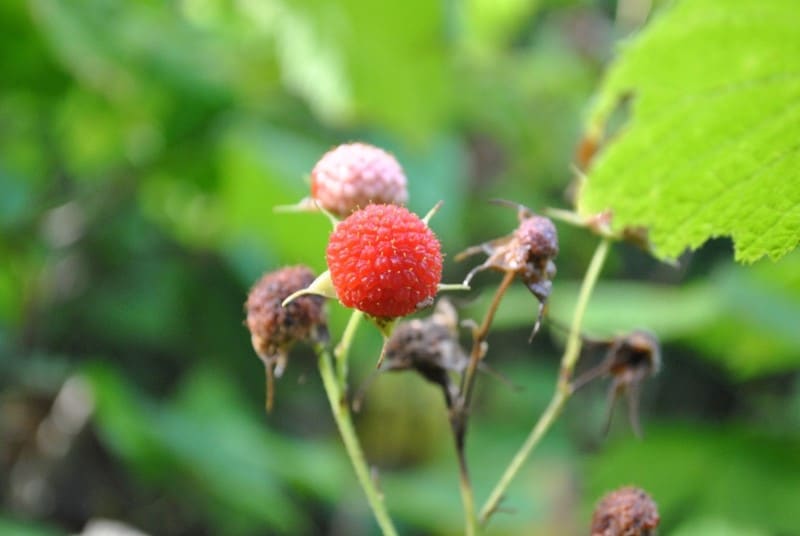
The scientific name of the thimbleberry fruit tree is Rubus parviflorus. The thimbleberry is an indigenous fruit of Northwest America. Presently thimbleberry fruit plant is widely spread in the states within the excellent lake region in America and the mountain ranges of Mexico. Due to their small size, they are rarely commercial.
Thimbleberry belongs to the Rose family. The thimbleberry is a fruit closely resembling a blackberry; however, it is more of a drupe than a berry. The fruit comprises small drupelets aggregated together to form one berry. The fruit is juicy and bright red, found growing in a bushy tree with soft and broad leaves.
Thimbleberry fruits have many tiny seeds inside. The juicy pulp is sweet but slightly tarted. The fruit is soft, small, and flat compared to other berries. The thimbleberry is edible in many ways but mostly chewed fresh. You can also squeeze the thimbleberries into juice or dry the fruit and use them in baking cakes. You can serve the berries on top of ice cream and yogurt.
Thimbleberry fruits are a source of antioxidants that strengthen your immune system. They contain vitamins C and A that help in skincare, fight acne and give you anti-inflammatory properties. Thimbleberry also contain traces of potassium and iron that helps in the formation of strong bones and the treatment of anemia.
The leaves and roots of thimbleberry possess great nutritional value. In the past, The roots and leaves have been used to make tea that is used to fight different ailments like nausea, vomiting, diarrhea and dysentery, and digestive problems.
Topaz Apple
The scientific name of a Topaz fruit tree is called Malus domestica. Topaz apple is a crossbreed variety of apples more resistant to diseases. This fruit is much tastier than its counterparts. Topaz apples originate from the Republic of Czech. However, these fruits have become popular and are presently grown in Europe.
Topaz apples vary in size but are mostly medium. The fruit has a juicy, crisp pulp that is cream in color and rich in taste. Topaz apple’s outward appearance differs slightly from the other apples in that it has a dominant yellow color with some splashes of red on it. The fruit is juicy with a sharp tart flavor.
You can use the Topaz apples in desserts, dressings, or cooking. The most common way is eating them fresh to enjoy their crunchy feel. However, these fruits can be blended into juice, smashed into smoothies, or added into puddings. Topaz apple can be mixed with cream or yogurt and served as dressings for meals when sliced.
The topaz apple fruits are rich in nutrients and fibers to help you in digestion and keep in check the absorption of sugar into the bloodstream. These tasty fruits are also composed of vitamin C, which helps your body fight diseases and infections and improves the healing of wounds. Topaz apples also have antitoxins that help fight diabetes and cancer and prevent cardiovascular complications.
Tangor
Tangor fruit tree has a scientific name of Citrus reticulata × Citrus sinensis. Tangor is a hybrid fruit of mandarin orange and sweet orange and is mostly mistaken for an orange. Tangor fruit was initially grown in Jamaica before being introduced to Florida, where it is grown commercially. It is classified as citrus fruit.
The tangor fruit has a bright orange skin that is soft and easy to peel. Inside is a pulp that is juicy and very tasty. Compared to an orange, the tangor is bigger, with its poles being round-shaped and a bit flattened. The bottom of a pealed tango fruit has a small hallow. You can extract oil from the small capsules on the skin of a tangor fruit.
Tangor is a fruit that can find many uses. Many people prefer to take it raw and fresh due to its juicy, tasty and sweet nature. The fruit’s pulp can also be smashed into a paste or blended into juice and smoothies. The important thing to keep in mind is to peel the fruit skin that’s not edible but beneficial in extracting oil.
The Tangor, like all the citrus fruits, can boost your immune and give you healthy skin due to the presence of vitamin C. The tangor contains natural plant compounds that can help prevent different cancers. The fruit contains vitamin B and potassium, a mineral vital to ensure proper function.
Tayberry
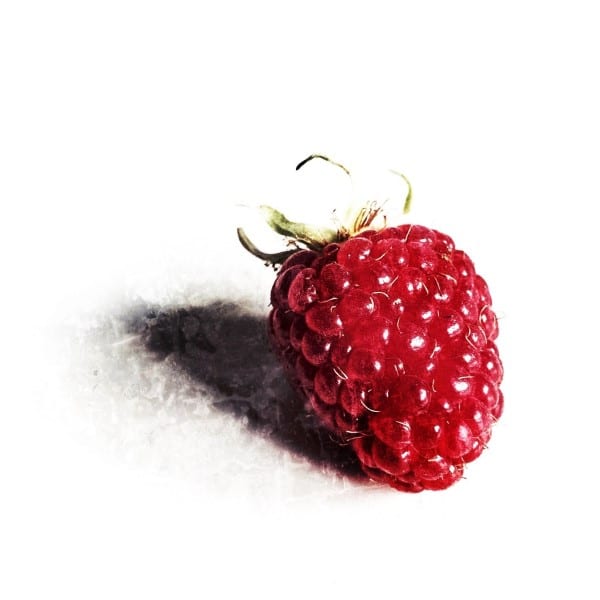
The scientific name of the tayberry fruit tree is Rubus fruticosus x idaeus. The fruit is a crossbreed of the blackberry and the red raspberry. Tayberries are known to originate from Scotland. However, tayberries are not cultivated for commercial purposes because they are not harvestable by machine and require careful handpicking due to their softness when ripe.
The tayberries have a sweet flavor with a little bit of tartness. These berries are closely related to the loganberry. They possess a reddish-purple color and are slightly larger compared to the loganberries. Despite having a little bit of tartness, they are less acidic and possess an aromatic flavor.
The tayberries can be enjoyed raw or cooked. These sweet, soft, and aromatic berries are a perfect recipe for desserts. When ripe, their soft nature makes them easy to smash to paste that you can use to make jam or add to ice cream, pancakes, or sandwiches. You can squeeze the tayberries to make juice or chewed fresh and raw for a much sweeter experience.
Though smaller in size than other fruits, the tayberries possess a variety of nutritional benefits for their users. These berries have Vitamin C, that helps maintain healthy skin and blood vessels. Tayberries are also rich in iron, a mineral that is used in the prevention and treatment of anemia. These berries help repair and regenerate body cells thanks to their richness in flavonoids.
Tomato Fruit
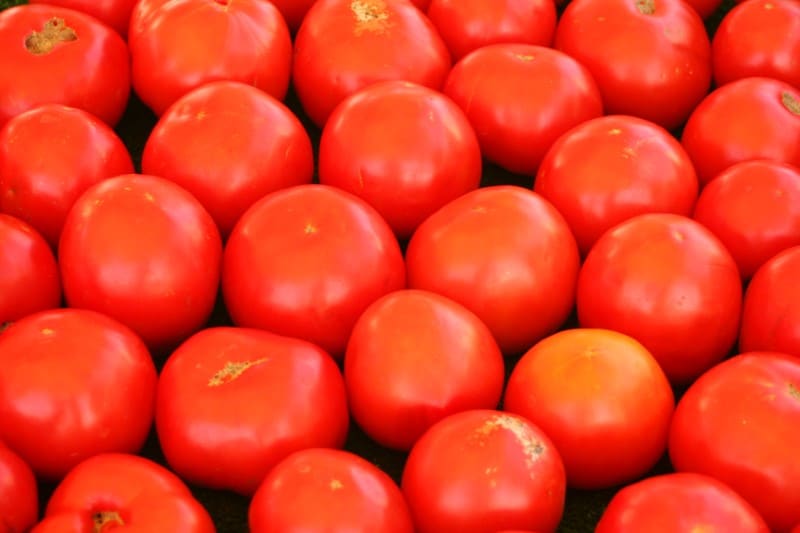
The scientific name for a tomato is Solanum lycopersicum. This fruit is commonly confused for a vegetable because nutritionists consider it so based on its nutritional value. Tomato fruits have an origin in South America and the Andes Mountains. However, with time it has become one of the most common and easy to assess fruit globally that is grown all over.
The tomato fruit is colored differently depending on the variant but is dominantly red. They are round to oval in shape and vary in size. The skin is thin and can be peeled off through a slow process. Tomatoes contain a fleshy jelly-like pulp inside with tiny seeds in two different cells. The fruit is odorless with a neutral refreshing taste.
The tomato fruit has been primarily used in the preparation of meals. You can cook the fruit with vegetables to add flavor. You can choose to chop the Tomatoes to make salads. However, to benefit from the rich nutrients found in the tomato fruit, consume it in paste or sauce form. The fruit can also be used to dress sandwiches and buggers.
Tomato fruit is packed with many nutritional values. It contains lycopene, an antioxidant that improves your vision. Tomatoes are rich in vitamin C, which boosts immunity and improves your skin condition. These fruits are also a good source of potassium, a mineral that controls your blood pressure and improves the functions of your heart.
Topinambur
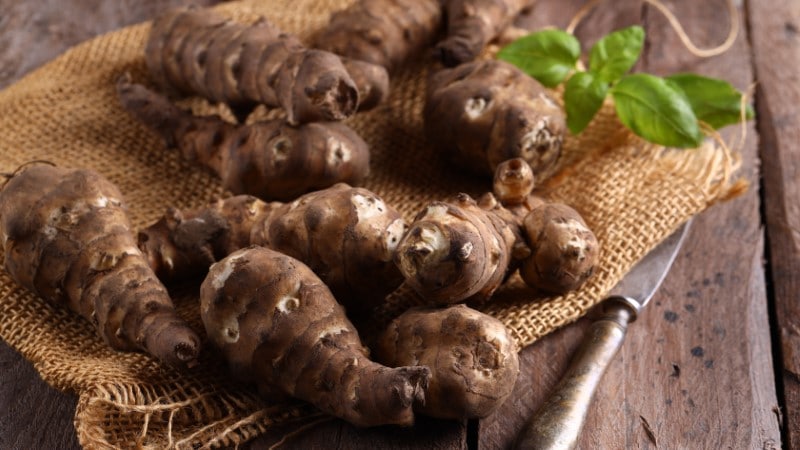
The scientific name of topinambur is Helianthus tuberosus. It is also called the Jerusalem artichoke, wild sunflower, sunchoke, earth apple, and sunroot. Despite its name, it has no relation to Jerusalem at all. Topinambur was first cultivated by native Americans. It is originally from North America and is now currently cultivated widely in temperate zones around the world.
The topinambur tuber is cultivated as a root vegetable. To prepare topinambur, you prepare it the same way as a regular potato. You can enjoy them raw, pickle them, or cook them. The perennial plant grows to about three meters tall. Its leaves are rough and with a hairy texture.
Trinidad Moruga Scorpion Pepper
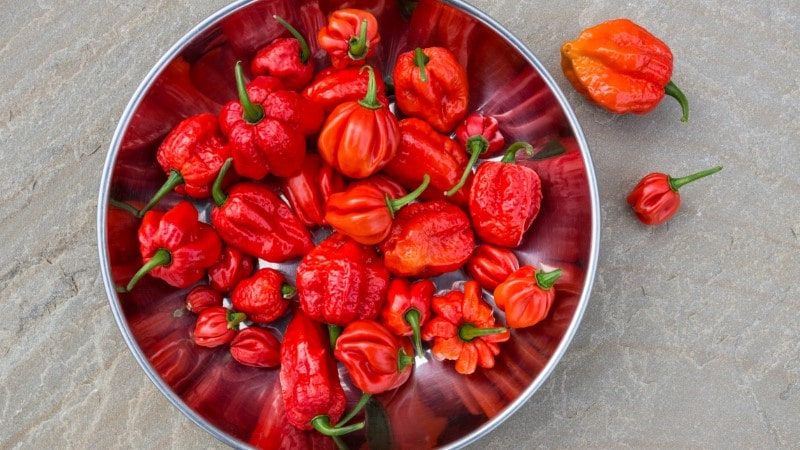
The scientific name of Trinidad Moruga Scorpion Pepper is Capsicum chinense. It is also called chili pepper. It is among the hottest peppers in the world. It has a nasty spicy flavor that keeps adding the more you take bites of Trinidad moruga scorpion pepper. Apart from the pepper’s heat, it has a faint sweet and fruity flavor. The vegetable nourishes well in any part of the world. Trinidad Moruga Scorpion Pepper is native to Trinidad, moruga, and Tobago.
Tomaccio Tomato
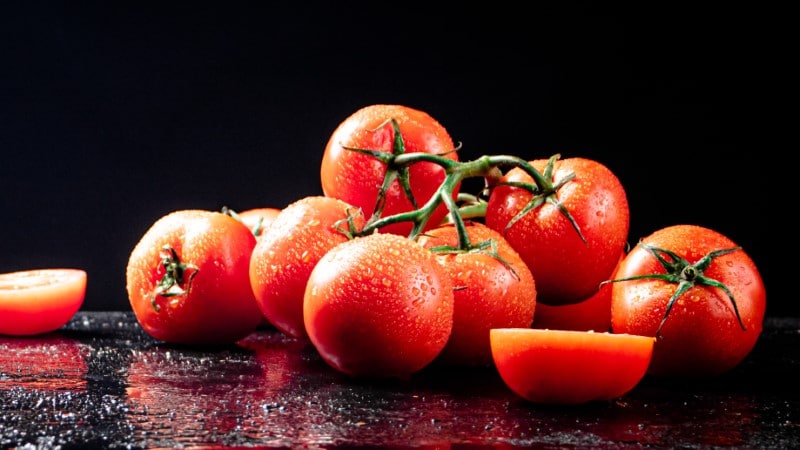
The scientific name of tomaccio tomato is Verbena Bonariensis. The vegetable was first developed in Israel with the help of a species called the wild Peruvian tomato. The tomaccio tomato produces a lot of tomatoes which are mostly used for making sun-dried tomatoes.
Turban Squash

The scientific name of turban squash is Cucurbita maxima’ Turban’. Turban squash is also called French turban and Turk’s turban. It has close relations to buttercup squash. The vegetable has a gorgeous appearance and comes in various colors, such as white, orange, and green. Turban squash has a weaker flavor than the other squash. Some consumers describe turban squash as a gorgeous vegetable with a worthless quality. Its flavor is nutty and sweet but mild. Turban squash is planted for both the use as a vegetable and for ornamental uses in your garden.
Tabasco Pepper

The scientific name of Tabasco pepper is Capsicum frutescens. It belongs to the Capsicum genus.
Tabasco pepper is native to Mexico and therefore got its name from a Mexican state. The vegetable is used as an ingredient to make Tabasco sauce.
The Tabasco pepper plant is bushy and gets healthier produce by trimming it. The plant grows to about 1.5 meters tall. Tabasco pepper is usually a pale yellow-green when unripe, and as it ripens, it turns yellow and orange, then bright red. Tabasco pepper thrives well in an area with plenty of heat and light, fertile soil, well-drained soil, and one that is slightly acidic.
The Final Letter
Fruits are not only there for their sweet-flavored taste but also for the health benefits they provide. Knowing what mineral nutrients and vitamins are contained in different fruits will give you the luxury shop according to your needs.
